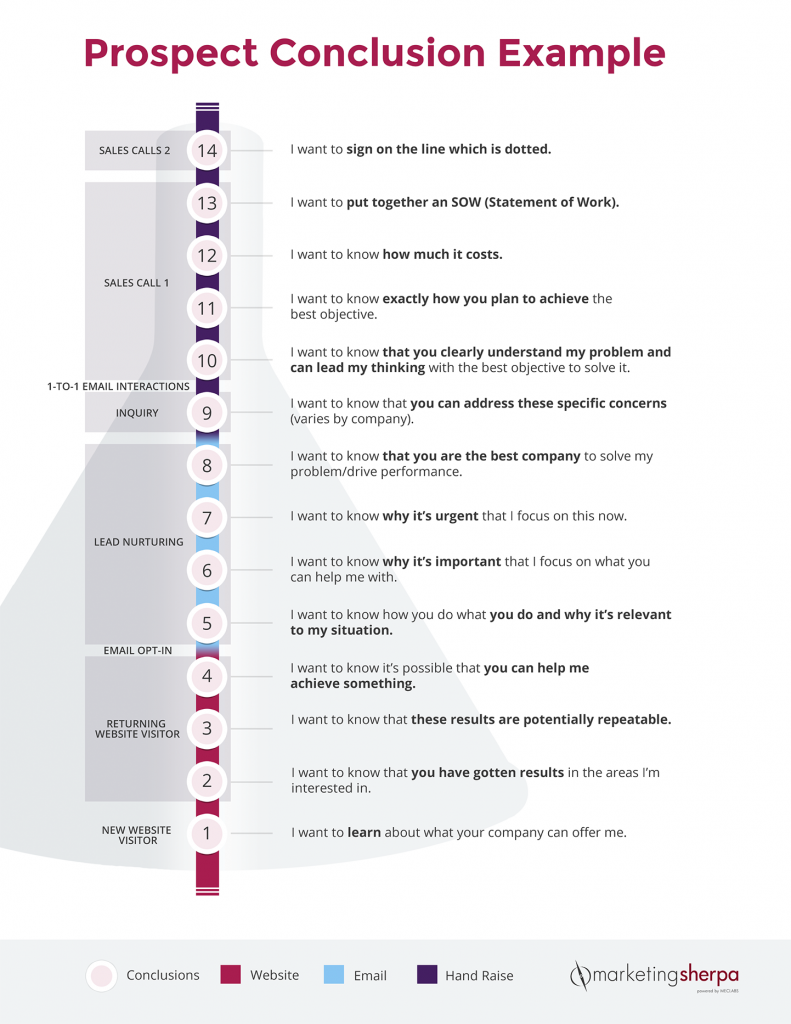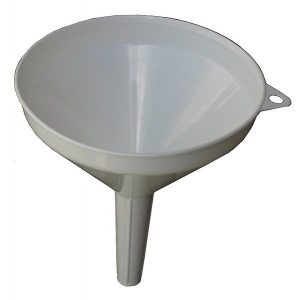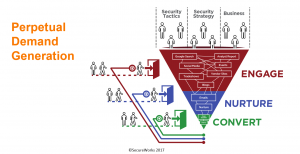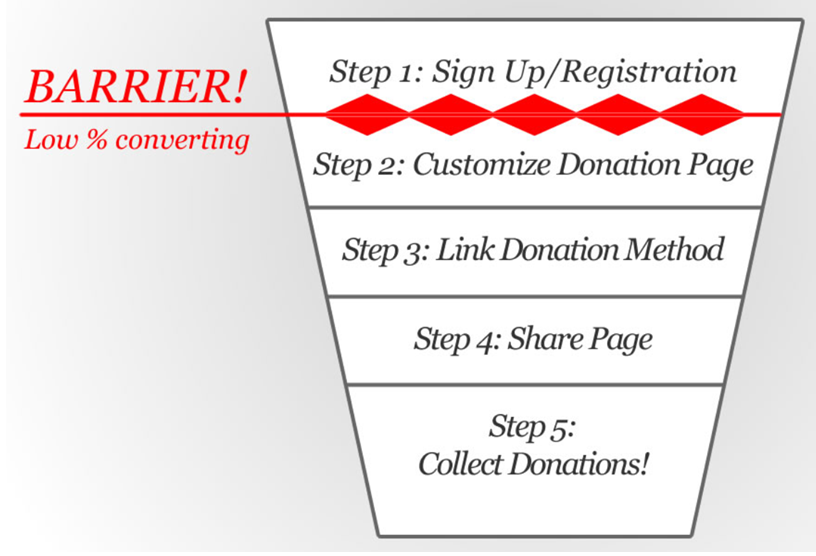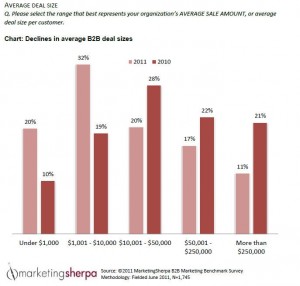Ask MarketingSherpa: Mapping the prospect conclusion funnel [includes free PDF example]
We frequently receive questions from our email subscribers asking marketing advice. Instead of hiding those answers in a one-to-one email communication, we occasionally publish some of them here on the MarketingSherpa blog so they can help other readers as well. If you have any questions, let us know.
Dear MarketingSherpa: Hi Daniel, I’m following up on the conversation started on Twitter about your blog post. My questions are:
– What was the main realization that took you to write this article?
– Do you think that this works for businesses in any industry? For example, some businesses are mostly offline, is it wise to invest time in creating a funnel for those as well?
FYI, this is the article I’m talking about — Marketing 101: What is funnel creation?
Looking forward to hearing back from you.
Thanks.
Dear Reader: I wrote the article because I received questions following the publication of this article: Website Development: How a small natural foods CPG company increased revenue 18% with a site redesign
Yes, the funnel works for any fairly complex purchase. This was true before the internet. Think about buying a car before the internet. First you saw the ad. Then maybe you filled out a business reply (BRC) card. Got invited in for a test drive. Test drove cars at competitors. Get to price negotiations. Etc, etc.
The funnel is a human decision-making phenomenon
I’ll go a step further. The funnel works for any fairly complex human decision, not just purchases, and certainly not just online. For example, you don’t instantly decide someone you meet in college is going to be your best friend. There’s a process.
And that begins with exposure to that person in the first place. You made micro-decisions to attend the same club meeting that person did, you approached them after the meeting, you had a good conversation, you invited them to hang out with your buddies, your buddies liked that person (third-party verification), you hung out more and more, you confided trust in that person (form fill with annual revenue info), that person confided trust in you … 40 years down that funnel, your best friend is giving a toast at your daughter’s wedding (the final purchase).
In a vacuum, the funnel still exists
The reader asked if it is it wise to create a funnel. It’s important to note that the funnel exists whether you choose to actively manage it or not. Take the example above. Your best friend didn’t choose to create a funnel to end up giving a toast at your daughter’s wedding. There were a set of decisions that you naturally made to get to that point.
It’s the same with the buyer’s journey. If you’re selling a car, there are a series of decisions a buyer will make on the path to deciding whether to purchase that car, whether you’ve set up a funnel or not.
What you can do is try to discover what these paths to purchase are, and then how you can use your marketing, sales and other resources to help them make that decision.
Let’s look at an example where we map business activities in a funnel to a set of conclusions a prospect has to reach for a B2B services contract.
Prospect conclusion funnel example
Let’s break down the example.



